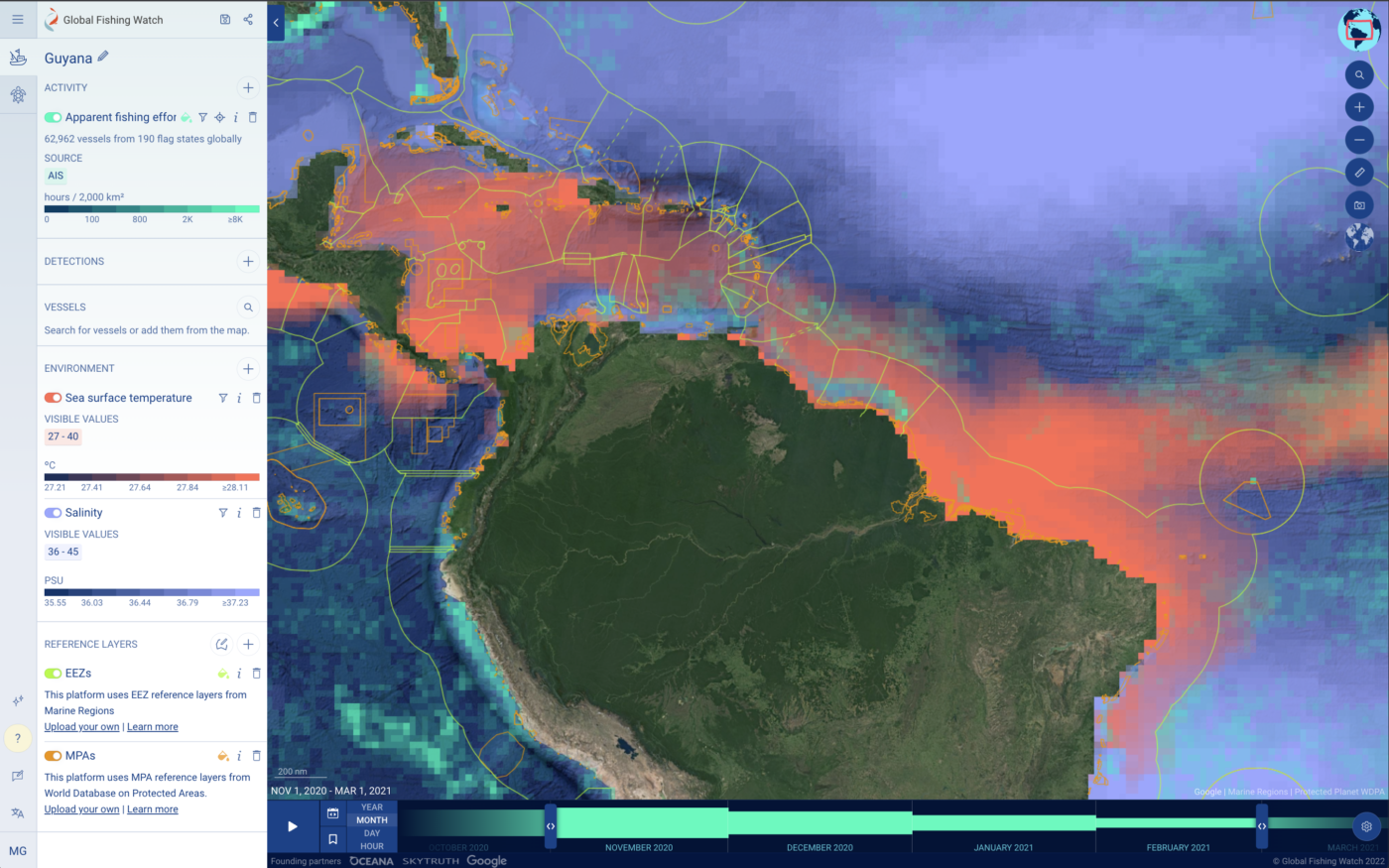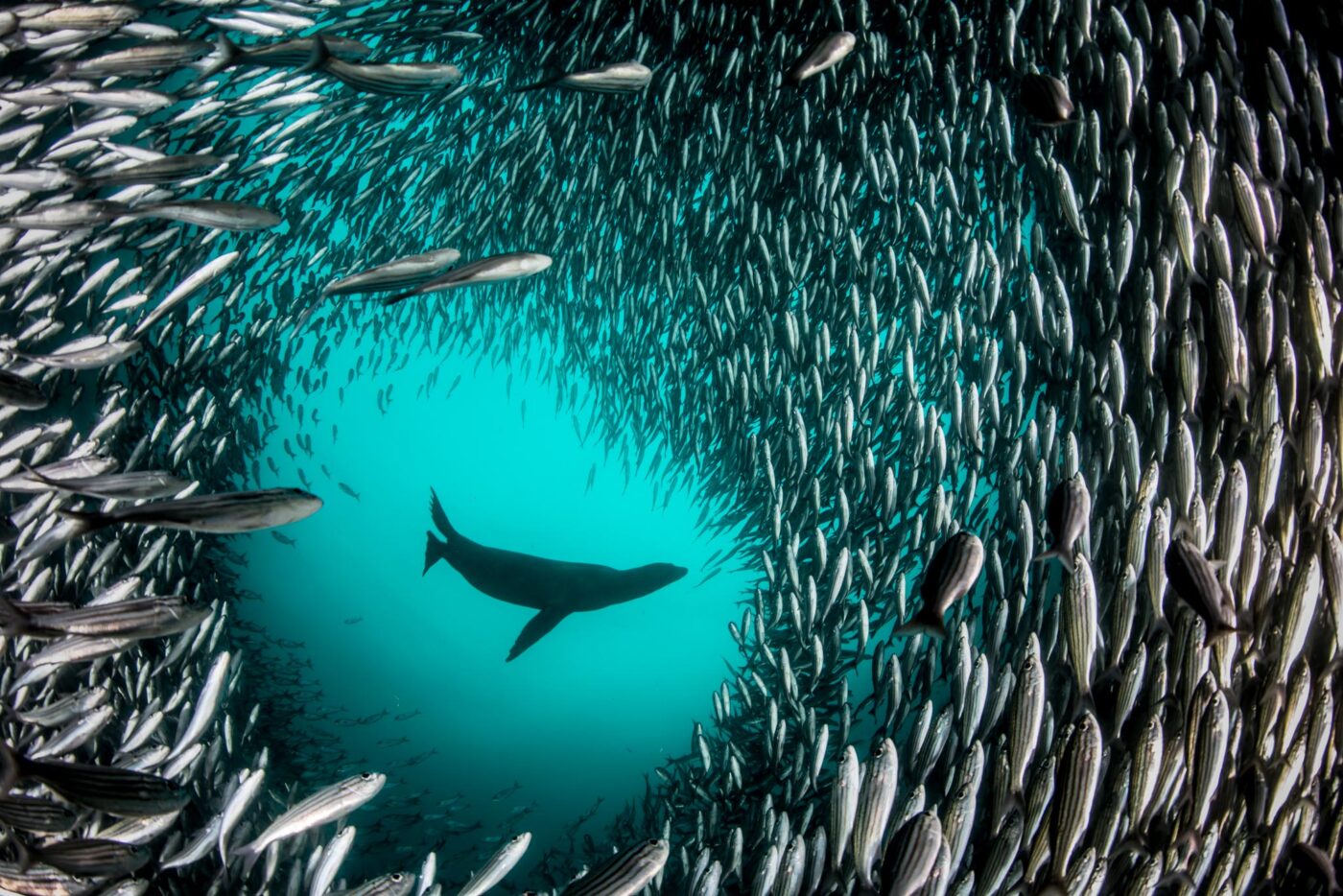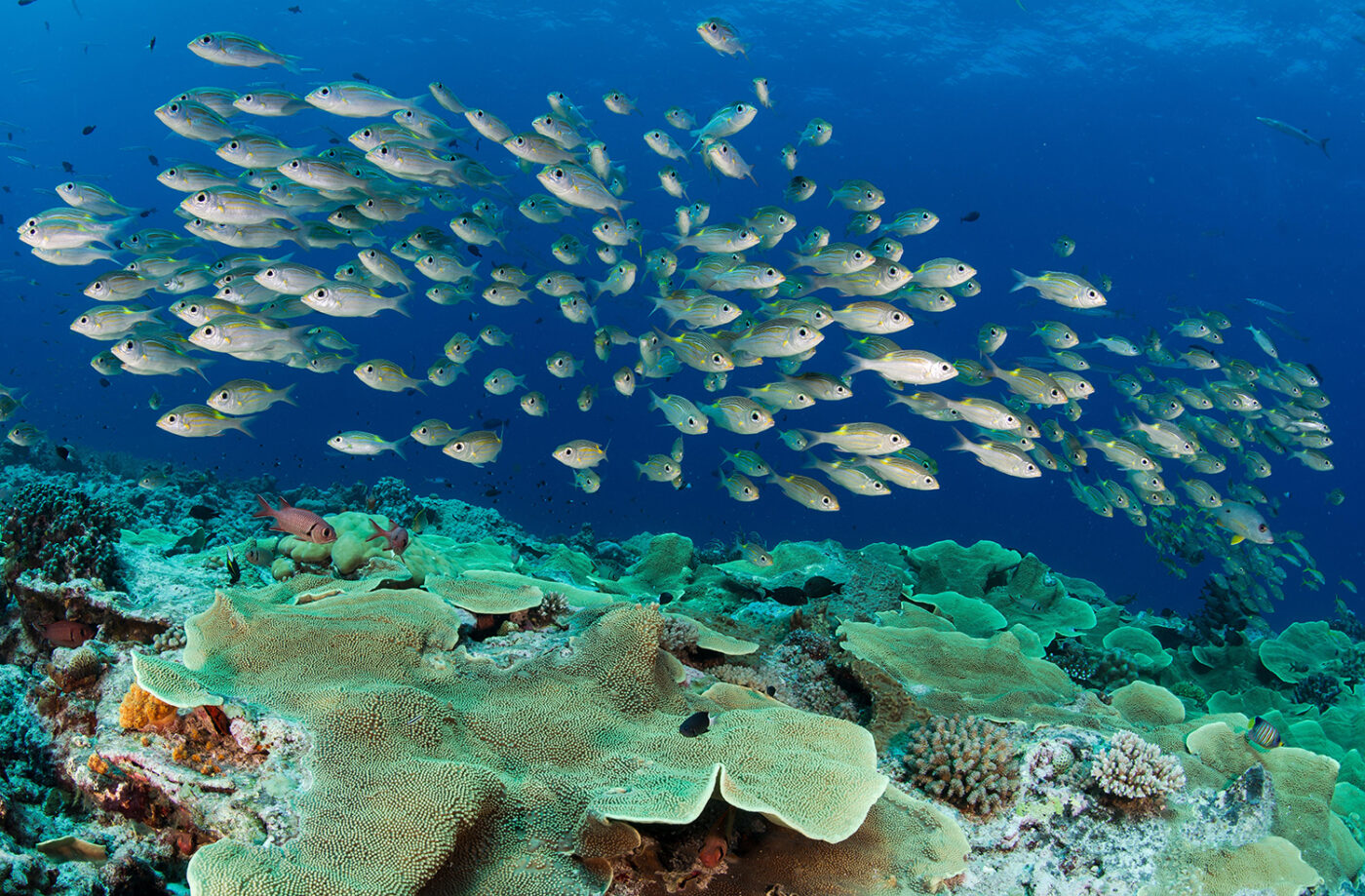Latest release of online tool will help more people monitor and manage greater expanses of the seas

In our brief but exciting history working to shed greater visibility on what’s happening on the ocean, we’ve learned that one must meet challenges with the tools at hand, even while working to perfect them. So in 2021, when we launched the pilot version of Global Fishing Watch Marine Manager, an online portal to help governments, researchers, conservation advocates and others monitor activity throughout the world’s marine environment, as well as design and implement protected areas, we knew we were committing to a journey of continual improvement.
This month we reached another milestone in that journey with the global release of Marine Manager, which includes expanded access and a suite of new features that we’re confident will help improve governance of biodiversity, fisheries, sensitive habitats and maritime activity around the globe.
To increase transparency and accountability in ocean management, we have made this tool available to anyone with an internet connection, allowing users to set up workspaces for any area globally. This will enable more people to access and use our data and insights, promote greater collaboration and information sharing among researchers, policymakers, and other stakeholders, and also help to build a broader understanding of global fishing patterns and trends to implement protected areas and improve management of them.
We designed Marine Manager with its founder, philanthropist and ocean advocate, Dona Bertarelli, in response to a cascade of threats facing our ocean, from illegal fishing and related crimes to climate change, ocean acidification and mismanaged fisheries. Mostly, we saw the need for the people who design and oversee marine protected areas (MPAs) to have a holistic view of what was happening on the water at any given time.
Before the launch of this free tool, fisheries officials, maritime authorities and ocean scientists could access data from multiple sources–for example, vessel activity data from one provider, sea-surface temperature readings from another and biological information from yet another. But these disparate bits of information were typically static, in different formats and difficult to merge, so an analyst spent more time connecting the dots than making sense of them. And for countries with few resources, even learning whom to ask for such data often proved to be a daunting obstacle. This posed significant challenges in marine spatial planning and also presented difficulties when it came to managing protected areas that had already been designated.
Marine Manager provides users with a trove of human activity and environmental insights, enabling them to monitor vast ocean areas and analyze situations in near-real time, for the first time putting a wealth of scientific information at the fingertips of governments, researchers, conservationists and anyone with an internet connection.

We launched the portal in May 2021 in five pilot sites: the Galápagos marine reserve, one of the most biologically diverse protected areas in the world; the Ascension Island MPA, which has never had considerable fishing activity and has a large number of unique native species; Guyana, where a recent offshore oil discovery has dramatically shifted activity in the national waters; Tristan da Cunha, a remote South Atlantic Ocean archipelago; and the island of Niue in the South Pacific. Now, thanks to Dona Bertarelli’s founding vision and support from a growing number of partners, including the Bloomberg Philanthropies Ocean Initiative, Department of Fisheries and Oceans Canada, The Pew Bertarelli Ocean Legacy Project and Waitt Foundation, we are engaging with more than 20 sites.
Our new release builds upon 18 months of real-world experience across the pilot sites and includes enhanced features that allow more people to use more data in more dynamic ways.
- Global environmental datasets: Through a new collaboration with Google Earth Engine, Marine Manager now provides users access to a catalog of high-resolution environmental datasets—from weather and climate to coastal hydrology—which can easily be connected to the user’s Marine Manager workspace to compare with human activity data. The Google data includes daily global sea surface temperature, salinity and chlorophyll-a concentrations—information that can help researchers, fisheries managers and others estimate the presence and concentration of certain species. And with a new ability to dynamically filter these layers, those designing and monitoring MPAs can actively use the data to inform management.
- The ability to view and analyze vessel groups: Marine Manager users can now visualize and analyze activity from multiple vessels at once, a capability that has many real-world applications. For example, MPA managers can now see where vessels are clustering outside a protected area or follow groups of ships flagged to a given country over time to detect patterns in vessel behavior. Users can also view these layers in isolation or in the context of other vessel activity in a given region.
- Greater accessibility: While use of Marine Manager was focused on several distinct regional sites during the pilot phase, the new global release provides access to anyone who wants to set up a virtual workspace for their own research or management needs around the world. Everyone can now even incorporate their own data into the portal—for example, to better see the confluences of shipping traffic or fishing activity and environmental data such as phytoplankton blooms. These workspaces can be public, for example to serve as a collaboration tool, or private to support research and data exchanges among a limited group or other goals.
Importantly, we hope governmental, scientific and ocean advocacy communities will leverage the power of Marine Manager to help protect and restore biodiversity throughout the world’s seas. The need to reverse the global decline of biodiversity has been front and center in the conservation community, particularly through the work of the Convention on Biological Diversity (CBD), which is holding its 15th Conference of the Parties–COP 15–this month in Montreal.

CBD has been advocating for protecting 30 percent of the planet’s ocean and land area by 2030, an effort known as 30 by 30. Many governments have also adopted this goal because the global ocean provides protein for an estimated third of the world population and supports livelihoods for around 60 million people. The ocean also sequesters and stores enormous volumes of carbon from the atmosphere, a service that experts say could be diminished if the current rate of biodiversity loss were to continue. Further, a healthy ocean and marine food web is needed to sustain coral reefs, mangrove forests, seagrass beds and other habitats that both feed people living in coastal areas and help protect them from storm surges.
Marine Manager can play a key role in helping countries gather the data they need to achieve their protection goals, such as 30 by 30. Governments face pressure to act quickly and ambitiously, and our technology can be pivotal in identifying areas for conservation and ensuring the effective and equitable management of them once they’re established.
This latest release of Marine Manager significantly raises the bar for remote monitoring and analysis of what’s happening throughout the global marine environment. And while we’re proud of how the portal has grown and are celebrating this launch, we’ll also continue working to improve the tool—for the ultimate benefit of the ocean and the billions of people who rely on it.
Tony Long is the chief executive officer of Global Fishing Watch.


